Back to Don's Maps
The Manis Mastodon
Early Hunters in North America
The Manis Mastodon site is a 2-acre (1 ha) archaeological site on the Olympic Peninsula near Sequim, Washington, USA.
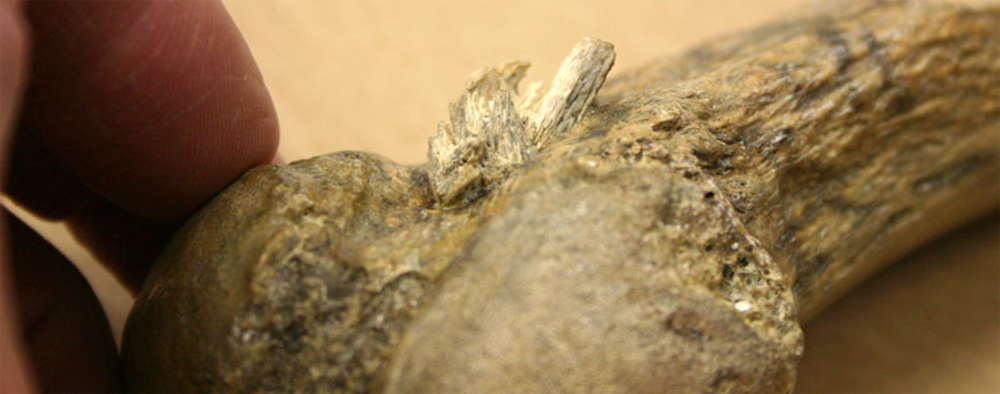
Close up of the bone point in the Mastodon rib bone, where an ice age hunter drove it in 13 800 years ago. The bone point used in the spear was itself made of mastodon bone.
Photo: http://csfa.tamu.edu/gallery/gallery-manis.php
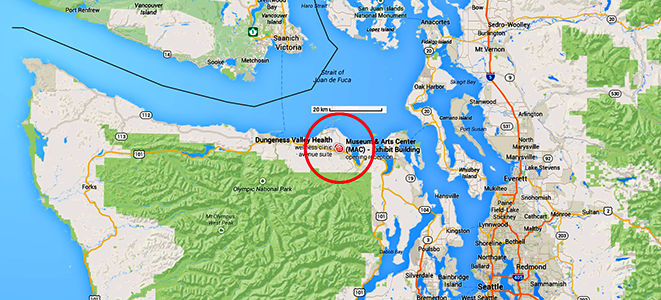
Map of the approximate location of the Manis Mastodon site.
Photo: Google Maps
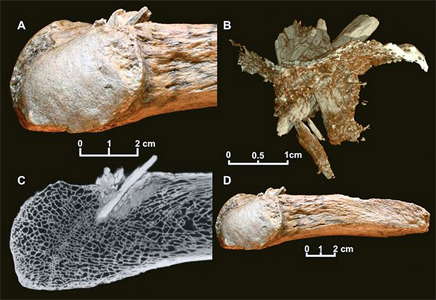
A newly analysed mastodon rib bone shows that Native Americans were using bone-pointed weapons to take down big game nearly a thousand years earlier than thought, according to a new study.
Images of the rib in close-up (A) and as a whole (D) show a broken projectile point still stuck where a hunter drove it in 13 800 years ago. The weapon, also made of bone, can be seen in a digital reconstruction (B) and an x-ray image (C).
The rib was found near the town of Sequim on Washington’s Olympic Peninsula, in the late 1970s and has been an object of debate ever since. Radiocarbon analysis, DNA samples, genetics work, and other modern techniques recently revealed its true age, according to the study, published Friday in the journal Science.
The age of the rib could help rewrite human history in the Americas, where the first well-established culture has been thought to be the Clovis people, named for finds near Clovis, New Mexico.
"We're starting to put together kill sites, camp sites - the whole gamut of the kinds of sites you'd expect to find that show pre-Clovis people were" in North America, said study leader Michael Waters, director of Texas A&M University's Centre for the Study of the First Americans.
"If you take these sites together, and also look at the modern genetic evidence we have, it starts pointing toward a story that suggests people entered what's now the Lower 48 United States around 15 000 years ago - well before Clovis."
Photos: Science/AAAS
Text: Brian Handwerk, October 21, 2011
Text Source: http://news.nationalgeographic.com/
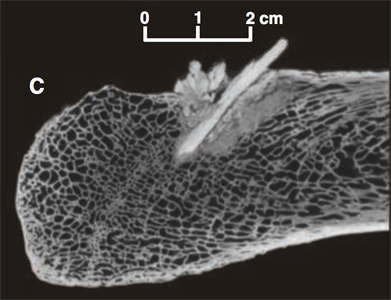
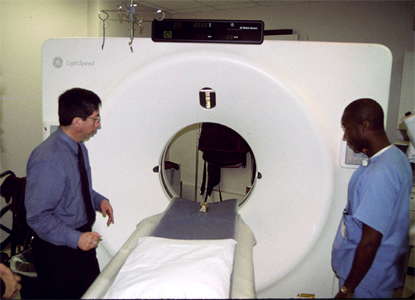
(left) Computed Tomography (CT) slice through Mastodon rib exposing bone point profile.
Photo: Waters et al. (2011)
(right) Putting the bone through the xray machine to produce the CT scan.
Photo: Science/AAAS
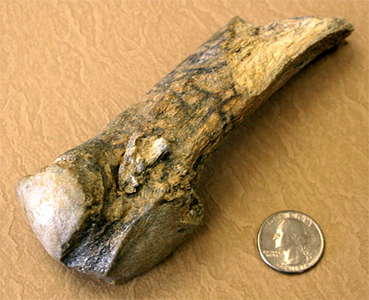
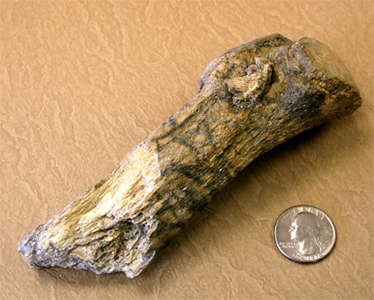
The injury had partly healed over, indicating that the 45 year old, arthritic mastodon with badly worn teeth had lived for at least three or four months, or possibly as much as a year after the spear point penetrated the rib. It had survived one attack by humans, but it did not survive the second.
Photos: Science/AAAS
Text: Adapted from Dolzani (1987)
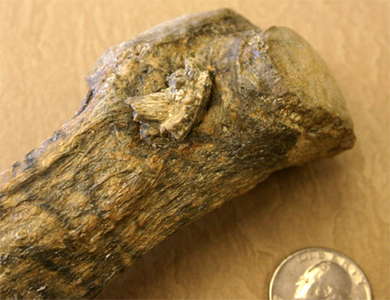
The original researchers led by Dr. Carl Gustafson of Washington State University quickly realised that they were excavating only half a mastodon - and not only that but, logically speaking, the wrong half. The mastodon had died fallen on its left side, so that the right-hand side should have been lying topmost; yet those bones were missing altogether. The Gustafson crew imagined that if Pleistocene people had butchered only the right side of the mastodon and abandoned the left, they would probably have carried the meat and bones a bit northward. Sure enough, excavation about 2 metres away produced the bones of the right side - not properly aligned like those of the left, but broken, scattered, - and scored; as if the top portion of the carcass had indeed been butchered.
Photos: Science/AAAS
Text: Dolzani (1987)
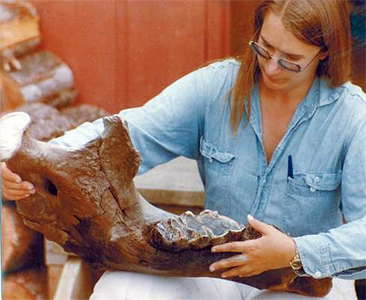
A Washington State University archaeology student looks over molars on a mastodon jaw found at the Manis site south of Sequim. Note the very worn teeth in the jaw, indicative of an old mastodon.
These teeth identified the animal as a mastodon, not the outwardly similar mammoth.
Photo: http://www.peninsuladailynews.com/article/20111023/NEWS/310239993/mastodon-discovery-in-sequim-made-history-twice-gallery#
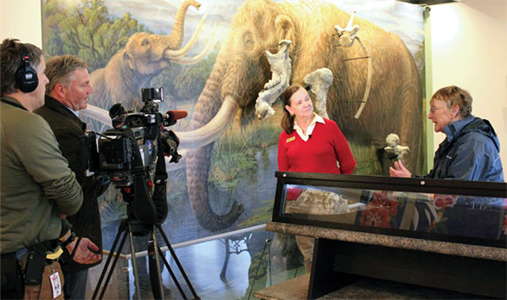
Clare Manis Hatler, far right, discusses the latest scientific findings relating to the Manis mastodon with Museum & Arts Center exhibit center manager Bridget Baker and a crew from KING 5 TV on Friday, Oct. 21 2011.
The television news reporters visited Sequim to film a story about the mastodon. Hatler said the new findings "vindicate" the work of Dr. Carl Gustafson, the original researcher of the site.
Photo: Renee Mizar
Text: http://www.sequimgazette.com/news/article.exm/2011-10-26_manis_mastodon_reveals_its_secret
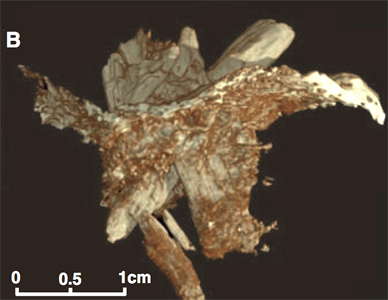
3-D Reconstruction of the bone point in the mastodon rib.
Photo: Center for the Study of the First Americans, Texas A&M University
John Hawk's entry for this latest information is interesting, as always:
The specimen is verified as a mastodon, and the bone used to kill it was itself made of mastodon bone:Text above from: http://johnhawks.net/node/28200We also obtained high-resolution tandem mass spectrometry (MS/MS)–based protein sequences from the projectile point and rib, and used another mastodon sample as a second reference (tables S3 to S6). The MS/MS spectra from the bone point matched the reconstructed mastodon collagen sequences, with the highest scores being within a reference set of collagen sequences (table S7 and supporting table of bone point marker peptides). These results and controls show that the point was fashioned from mastodon bone. The conclusion of the paper suggests that the evidence of pre-Clovis megafauna hunting argues against a "blitzkrieg" scenario for megafaunal extinctions. Instead, the authors suggest that the extinction was staged over a period of nearly 2000 years. The invention of Clovis points around 13,000 years ago is proposed to be near the end of the process, which may have begun before 14,800 years ago according to a kill site at Hebior, Wisconsin. Waters (2011)I think this distinction is just semantic. If 2000 years of human predation eliminated mastodons, mammoths, and all the rest of the megafauna, which occupied North America for more than a million years before that, it looks a lot like "blitzkrieg" to me.
The discovery of the Mastodon bone
Dolzani (1987)
In August, 1977, on the Olympic Peninsula of the state of Washington, Carl Gustafson, Associate Professor of anthropology from Washington State University, leaned over, picked a fragment of mastodon rib out of the black mud of a bog, and 'felt a bump that didn't belong there.' The rib fragment was covered with black bog matrix, 'miserable stuff ,' as Gustafson describes it, in which he had to stand nearly hip deep to excavate what has come to be called the Manis mastodon. 'So,' as he remembers, 'I just stopped and washed that off. There was a piece of - in my notes I think I called it 'foreign bone' - embedded in this rib.' This was during his first visit to the Manis site, which began as a salvage investigation. 'At this point we just shut the whole thing down and took stock of what we were going to do. Because this thing that was stuck in the rib looked for all the world like it might have been a bone projectile point.' Now, an indication that humans had been hunting mastodons would be interesting anywhere in North America because it is evidence of human antiquity: mastodons died out somewhere around 10 000 years ago. It would be additionally remarkable because, although we have plenty of knowledge that humans hunted mammoths, there has been, for some reason, little evidence north of Mexico that humans hunted their smaller relative, the mastodon. But such a discovery would be most exciting of all in the Pacific Northwest, where it would represent 'far and away the oldest material that we have, going back to about 12 000 years ago.'
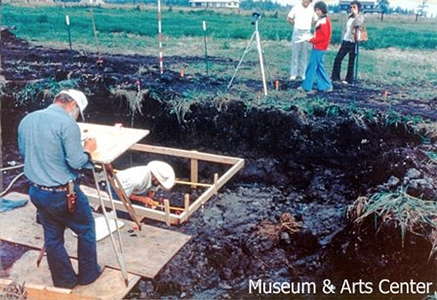
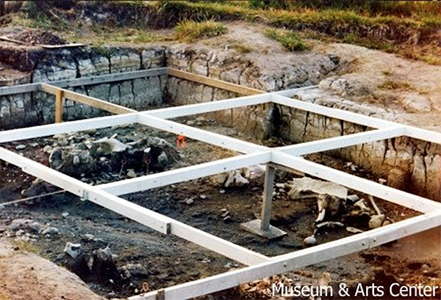
Dr Carl Gustafson surveyed the site thoroughly, and set up a grid of wooden squares which allowed the finds to be accurately located.
Photo: Clare Manis - the photos are now housed in the Photo Archives of the Museum & Arts Center, Sequim - Dungeness Valley
Text: Don
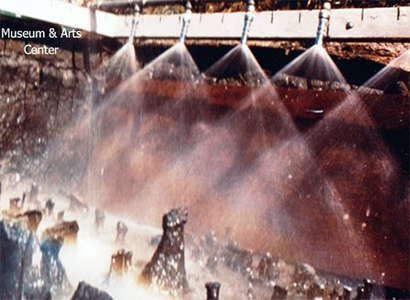
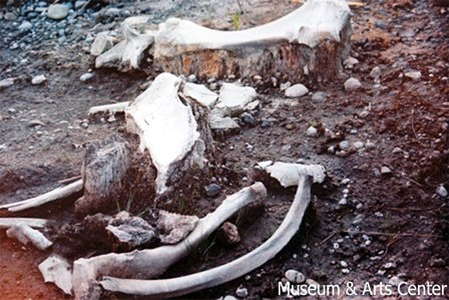 Gustafson used a technique particularly appropriate in this case. The wooden grid served two purposes, first for accurate mapping, and second the unearthing of the bones. He affixed water sprays, which took away the black mud, and left the bones sticking up on little islands of earth, as well as heavy duty pumps to take the silt laden water away from the site to some small dams, where it settled out and the water was reused.
Gustafson used a technique particularly appropriate in this case. The wooden grid served two purposes, first for accurate mapping, and second the unearthing of the bones. He affixed water sprays, which took away the black mud, and left the bones sticking up on little islands of earth, as well as heavy duty pumps to take the silt laden water away from the site to some small dams, where it settled out and the water was reused.
The bones in this photo are the leg bones of the mastodon.
I suspect that the waterlogged nature of the site meant that the bones were well preserved because of the lack of oxygen. There had been a layer of peat over the top of the mastodon skeleton, which Manny Manis sold for fuel in the area, and peat bogs are renowned for preserving organic materials.
Photo: Clare Manis - the photos are now housed in the Photo Archives of the Museum & Arts Center, Sequim - Dungeness Valley
Text: Don
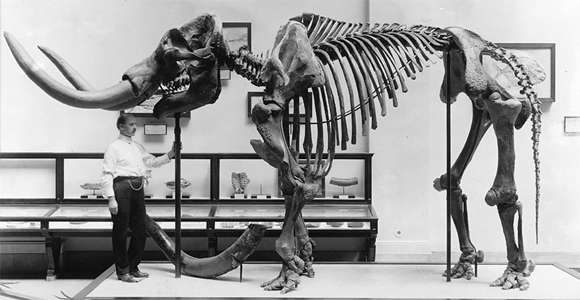
A museum employee stands beneath a mastodon skeleton on display at the U.S. National Museum, now the Smithsonian National Museum of Natural History, circa 1917.
Photo and text: Smithsonian Institution Archives, http://www.npr.org/2011/10/20/141549739/what-slew-an-ancient-mastodon-dna-tells-tale
Archaeology is part of the study of humanity by itself, and it is not surprising if it opens out, at least momentarily, into philosophical dimensions. One ponders how little, yet how much, it takes to alter the course of a life. How little, because Carl Gustafson has been excavating and lecturing about the Manis site for ten years now, though he has been without major funding since 1979, and all because of a piece of bone or antler embedded in a mastodon rib that he has been compelled to brood upon like Hamlet over Yorick’s skull. And yet how much, for the chances against his having picked up exactly that piece of mastodon rib fragment are enormous. There is plenty of corroborating evidence for human association with the Manis mastodon, beginning with the analysis of the piece of embedded bone or antler itself. X-rays taken at the Wallace Harms Group Laboratory near Seattle showed that the object tapered to a point inside the rib, where it had penetrated about three quarters of an inch. Dr. Marvin Wallace diagnosed the wound as a typical penetration fracture, definitely made while the mastodon was still alive and not a freak product of the backhoe that had originally thrown up the rib, because the rib had clearly healed around bone or antler for at least 3 - 4 months and possibly for as long as a year. It was definitely not the cause of the animal's death, which may well have been simple old age.
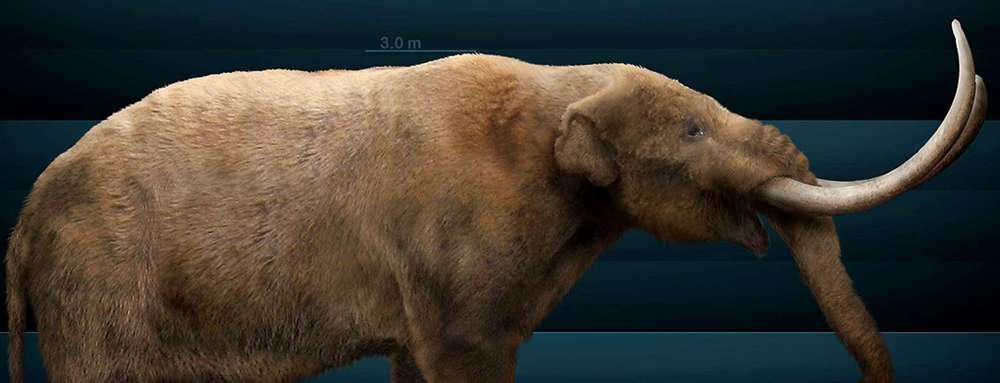
The American Mastodon, Mammut americanum
Photo: Sergiodlarosa, GNU Free Documentation License, Version 1.2 or later
The Manis mastodon was an arthritic old fellow with highly worn teeth who was about 45 years old by African elephant standards. Gustafson’s field crew proceeded to excavate, excited by the probability this was an early archaeological site. They quickly discovered that they were at first excavating only half a mastodon -and not only that but, logically speaking, the wrong half. The mastodon had died fallen on its left side, so that the right-hand side should have been lying topmost; yet those bones were missing altogether. The Gustafson crew imagined that if Pleistocene people had butchered only the right side of the mastodon and abandoned the left, they would probably have carried the meat and bones a bit northward. Sure enough, excavation about 2 metres away produced the bones of the right side - not properly aligned like those of the left, but broken, scattered, - and scored; as if the top portion of the carcass had indeed been butchered. (Gustafson later worked out that the dead mastodon was lying in 2 to 3 feet of water, so they took what they could get and moved it up-slope - Don )
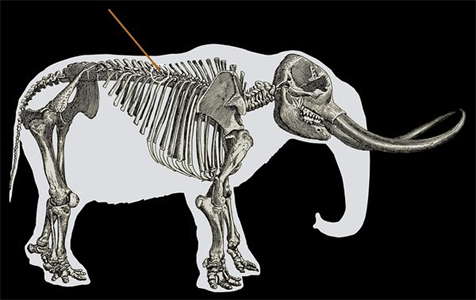
A mastodon illustration shows the angle at which ancient hunters drove a spear point through some 10 to 12 inches (25 to 30 centimetres) of hide, tissue, and muscle before penetrating bone.
Photo: Texas A&M University
Text: http://news.nationalgeographic.com/
Subsequent pollen analysis by Peter J. Mehringer, Jr. and Kenneth Petersen suggested that the general area where the mastodon was found included patches of marshy, pond - like vegetation, particularly cattails. Reasoning that such an area would have been too low and wet for a camp, Gustafson decided to look for the nearest higher ground - that is, on the ancient landscape. To do this, sediment cores were gathered about every two metres in a fan-shaped sample. About 25 m from the fallen mastodon they discovered that the ancient land surface sloped rapidly upward to a suitable camp area. Here, a shallow trench was excavated by backhoe and the ancient material adjacent to the trench (including the slope) was carefully removed, beginning with the marker horizon of volcanic ash known to have been deposited 6 700 BP. Beneath the ash layer they discovered a broken bison skull slightly downslope from a deposit of three charcoal lenses, the largest of which was about 2 m x 1.5 m. Associated with the lowest charcoal lens were fire-cracked rocks and a broken, charred bison metapodial (lower limb bone). Both the skull and the metapodial were found on the Pleistocene gravel surface.
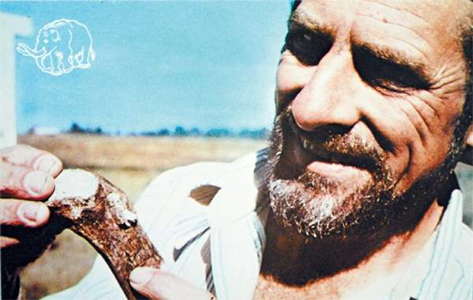
Carl Gustafson, Washington State University zoologist who led the archaeological dig team, examines the bone spear point embedded in the rib bone of the mastodon discovered by Emanuel Manis on Aug. 8, 1977.
Photo: Museum & Arts Center of the Sequim-Dungeness Valley
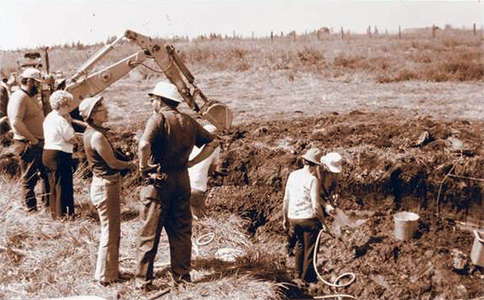
Washington State University archaeologists at the Manis mastodon site in Happy Valley near Sequim in the late 1970s.
Photo: http://www.peninsuladailynews.com/article/20111023/NEWS/310239993/mastodon-discovery-in-sequim-made-history-twice-gallery#
The next task was to connect the feature on the knoll with the main site area; this was done in 1979 with a stratigraphic trench. They discovered that the glacial gravel surface immediately underlying both features was very slow to accumulate sediment, and that material found on that surface could have been deposited anywhere between about 12 to 10 000 years ago. Thus, although both site areas dated to the end of the Pleistocene, absolute contemporaneity could not be demonstrated. From 1980 to 1983, lacking further funding, Gustafson and his son, Bradley, returned without a crew to excavate an area where evidence of a second mastodon had been found back in 1979, about 10 m from the original mastodon. The very fragmentary remains of this animal as well as fragments of bison bone were located stratigraphically just below the original mastodon, within the glacial debris; these bones show probable evidence of human butchering. More bison teeth and bone were found on the glacial surface (at the same level as the original mastodon); these bones also show evidence of human modification.
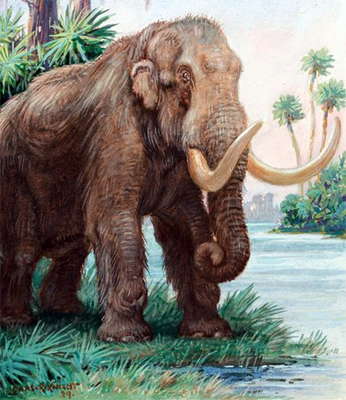
North America's mastodons went extinct about 12 800 years ago. Climate change and disease may have been causes, but Clovis hunters have also borne a big share of the blame. A "blitzkrieg" theory suggests Clovis groups poured south through an ice-free corridor in western Canada, armed themselves with pointed stone weapons, and killed off big game in relatively short order.
But recent evidence, such as the speared mastodon rib from Washington State, hints at previous human pressure on the elephant-like creatures. "I think Manis, as well as the Wisconsin sites, shows that people were hunting these elephants a long time before Clovis," Waters said. "Granted, the climate was changing, and the vegetation was changing, but they were also being hunted, and that probably had some impact on their populations."
Photo: Charles R. Knight, National Geographic
Text: http://news.nationalgeographic.com/
In 1984, with a small private donation, Gustafson again took a crew to the site. The goal was to stratigraphically connect and study the relationships among the three site areas. His current interpretation of that evidence is that the modification of bison and mastodon bones at all three of the site areas took place between 12 000 and 10 000 years ago. This was followed by a hiatus of cultural evidence lasting until just after the Mt. Mazama volcanic eruption, 6 700 years ago. At the end of the 1984 season, as he was cleaning up the sides of one of the trenches, Gustafson discovered a curious feature that resembles a posthole. In excavating the following year, he found that the feature extends from just below material dated to 9 500 years ago, down through the sediments that contained the mastodon and bison bone, and down into the glacial gravels. Upslope from this feature was a second one in the same stratigraphic position, but which resembled a pit. In 1986 a third posthole like feature was found fairly close to the other two features. No decision has yet been made about continuing the excavation to search for further such features. Work is now proceeding to complete the analysis and publish the results.
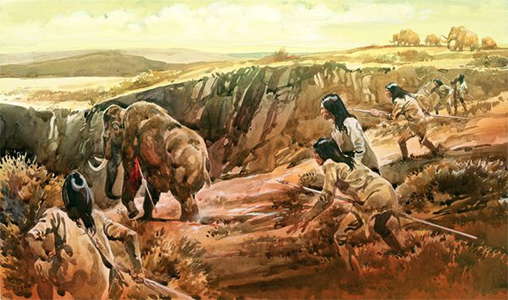
Native Americans hunt mastodon with spears around 13 000 BP. (file illustration).
The newly analyzed bone projectile point is the first known weapon to be associated with a pre-Clovis kill site, Waters said. "We've seen stone tools probably used in the butchering of mammoths, but not any kinds of projectiles that would have been used to bring them down."
(Note that this mastodon looks awful like a mammoth - the back sloping down steeply to the short rear legs, the pronounced furrow at the neck, and the topknot on top of the head. I think this image has been wrongly filed, though it is an excellent illustration of a mammoth hunt, which would not have differed significantly from a mastodon hunt - Don )
Photo: Roy Andersen, National Geographic
Text: http://news.nationalgeographic.com/
Says Gustafson, 'We've never had all this material together until last fall. It was stored in five different buildings, and some was stored at the site. We've just finished cataloging and pre- serving all of the specimens.' Although much of the preliminary analysis was done as the excavation proceeded, it now remains to Gustaf son to pull the entire picture together. The history of this excavation illustrates the complexity of most archaeological investigations. From the need for cooperation between academic, public, and private realms to the ongoing need for funding, publicity, and staff, the Manis site runs the gamut of such experiences. The Manis site attracted an overwhelming amount of public notice. For at least three weeks after the initial discovery, reporters converged on the site 15 - 20 at a time; constant interviews and tours had to be given. Over the years, 25 000 people from all over the world have visited it, many of them with car trunks full of fossils for the archeologists to look at.
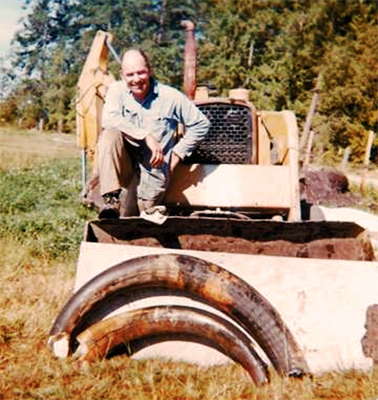
Emanuel "Manny" Manis (1926-2000) on his backhoe in 1977 with tusks from what would become the Manis mastodon in Happy Valley near Sequim. He was digging a pond on his farm when he uncovered the historic find. The area was normally a bog, but a drought had dried it out enough that he decided to seize the opportunity to create a pond, at a time when the earth was dry enough to dig, and his backhoe was less likely to get bogged. A permanent pond built in the marshy part of the small farm would provide water for cows and crops.
Photo: 1977, Clare Manis, Museum & Arts Center of the Sequim-Dungeness Valley.
An irony atop this irony is that the land, located near the town of Sequim on Washington’s Olympic Peninsula, is privately owned by Clare and Emanuel Manis, whose plan, when they moved near the sleepy retirement village of 1975, was to live quietly and self - sufficiently off the land, in a house which they had built with their own hands. In August, 1977, 'Manny' Manis decided to dig a pond with a backhoe in the middle of his front yard. But then he hit two huge obstacles: what looked like two old mud covered logs, 6 - 7 inches in diameter and four and six feet long respectively. It takes a while to convince yourself that you have actually dug up elephants tusks out of your front yard in the middle of Washington state. It took Manis a little longer still to convince his wife, who was called down to the spot grumbling and sceptical. But once she saw the size of the tusks, she decided that someone needed to come out and see them, to find out if they might be important. She made phone call after phone call until she finally got through to somebody; and that somebody was Dr. Richard Daugherty, professor of anthropology and Gustafson's colleague at Washington State University. He and Gustafson converged on the site on the 17th of August, 1977.
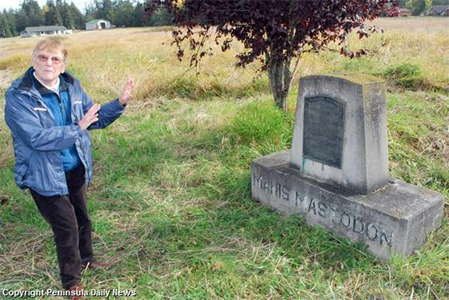
Clare Manis Hatler stands by the concrete monument her late husband, Emanuel 'Manny' Manis, erected on their property, firmly embedding the plaque that then-Gov. Dixie Lee Ray gave to them to mount.after Manis mastodon bones were discovered there in August 1977, linking man and mastodon for the first time on the North American continent.
It is just off the road on the edge of the field filled in and overgrown with canary grass over where an archaeological dig took place from 1977 to 1985.
Photo and text: © Jeff Chew/Peninsula Daily News
'We just developed our own miniature corps of engineers and began putting in dams and excavating sumps, turned the water around and began spraying it onto the back dirt.' Manis had already removed the top layer of peat, which he was selling to the nearby retirement community. What was left was the gravelly layer of glacial debris beneath in which the tusks had been discovered. There was a pile of the gravelly material maybe 4 - 5 feet high and 15 - 20 feet long on the island, and (initially) a weekend to go through it — or so they thought as they washed away the mud and gravel, 'leaving the bone up on a pedestal.' Then Gustafson found the bone-embedded rib. 'We ended up staying five and a half months,' he says with a laugh.
Text below from: http://www.historylink.org/index.cfm?DisplayPage=output.cfm&file_id=8511
On higher ground near the pond, charcoal and animal bones indicated that humans had camped there repeatedly between 14 000 and 8 000 years ago. The team discovered that the early hunters had carried bones from the more exposed right side of the mastodon to a slightly higher elevation for butchering. The presence of these bones less than an inch above the glacial gravel indicated that the mastodon had died soon after the last glacier had retreated. Subsequent excavations nearby yielded a few remains of another apparently butchered mastodon, as well as evidence of repeated human habitation.
Emanual Manis died in 2000. In 2002 Clare Manis donated the two-acre site to the non-profit Archaeological Conservancy in his memory. The tusks and major bones of the mastodon are preserved in an exhibit at the Museum and Arts Center in Sequim. The life-size mural on which actual bones are superimposed convincingly depicts the mastodon and its environment. The tusks repose in a tank of water in front of the mural. An excellent video shown there, narrated by Dr. Gustafson, recounts the history of excavation of the site.
References
- Dolzani M., 1987: Manis Mastodon Site Revisited, Mammoth Trumpet volume 3, number 3 Spring 1987, Center for the Study of Early Man, University of Maine
- Waters M. et al., 2011: Pre-Clovis Mastodon Hunting 13 800 Years Ago at the Manis Site, Washington. Science 334 (21):351-353.